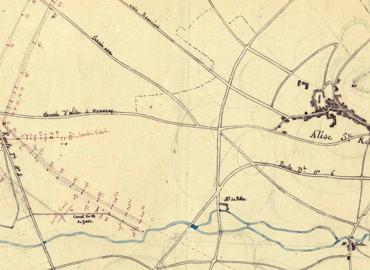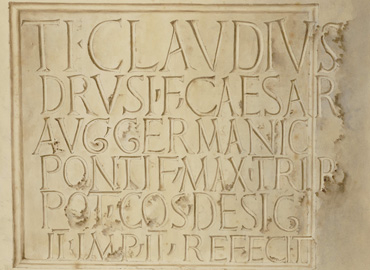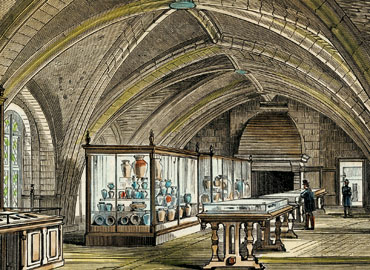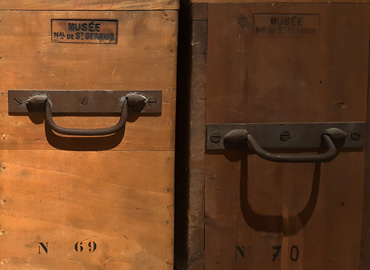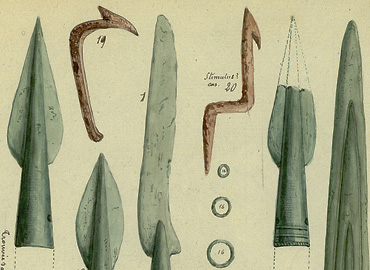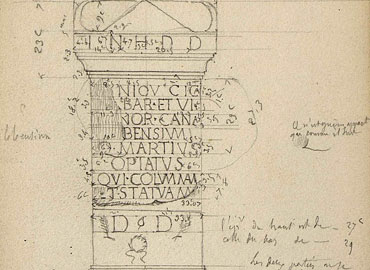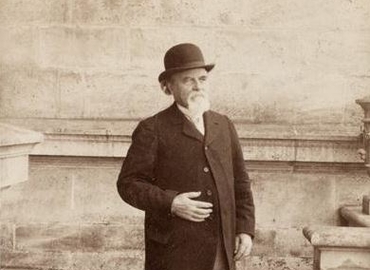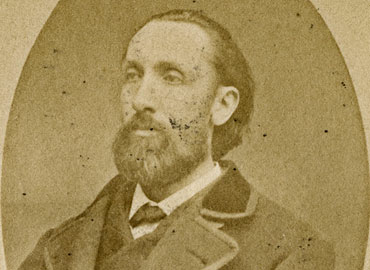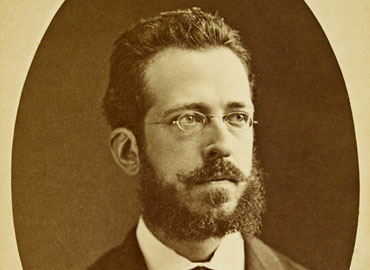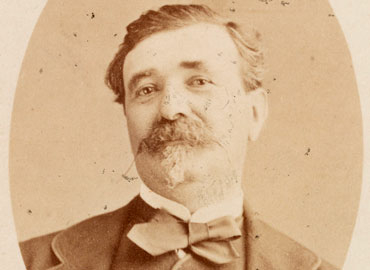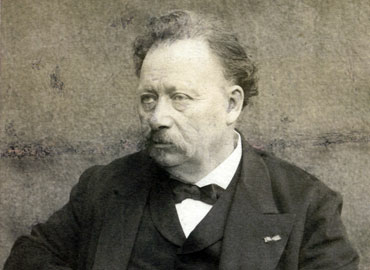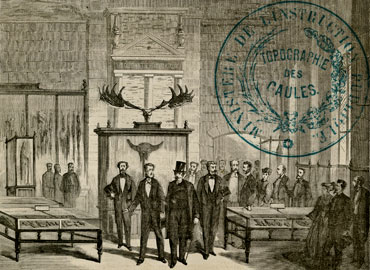
The Commission de Topographie des Gaules
Map of CTG excavations
Media & Resources
-

Caricature by Mérimée, published in the “Pro Alésia” review, 1906-1907
This caricature, drawn by Mérimée in the 1860s, was published more than 40 years after the excavations carried out by the Commission de Topographie des Gaules between 1861 and 1862. It was inspired by the debate concerning the location of the site of Alesia, at Alaise or Alise-Sainte-Reine. In it, the two towns are personified by women sat on promontories. The author identifies the characters in the foreground, from right to left: Claude Rossignol, with the bird; Napoléon III; an artilleryman (possibly General Creuly); a person with their hands crossed behind their back (possibly Alexandre Bertrand); and Félicien de Saulcy, digging a trench. Julius Caesar is watching over the scene from a cloud above. From 1906, the Pro Alésia review published the results of excavations at Alise and answered questions about the ancient site.
MAN
-

Carte des bornes milliaires, 1878
This is one of the last maps produced by the Commission de Topographie des Gaules (CTG). It was made by Antoine Héron de Villefosse, a palaeographic archivist and epigraphist who joined the CTG just before its dissolution. It shows the location of the remains of milestones which marked distances on Roman roads. Members of the CTG produced copies and estampages of inscriptions on milestones as part of the commission’s epigraphic project. Some were exhibited in the musée gallo-romain or were reproduced on plates for specially designed displays. This mounted map was also on display on the museum’s mezzanine, at the entrance to the epigraphic rooms.
MAN ©MAN/Valorie Gô
-

Funerary artefacts discovered at Magny-Lambert in 1872
In 1872, Édouard Flouest, a correspondent of the Commission de Topographie des Gaules, and Abel Maître, head of the workshops at the musée gallo-romain, led excavations at Magny-Lambert, in the Côte-d'Or region, funded by the commission. The burial mound of “Monceau-Laurent” revealed the tomb of a warrior from the 7th century BCE, along with impressive funerary artefacts: a drinking vessel, long iron sword and razor. These items, today conserved at the musée d'Archéologie nationale, were drawn by Flouest soon after their discovery. Flouest, in the notes accompanying his drawing, noted the technique used for making the cist and its state of preservation.
Drawing © MAN; Photograph of object © RMN-Grand Palais (musée d'Archéologie nationale)/Hervé Lewandowski
